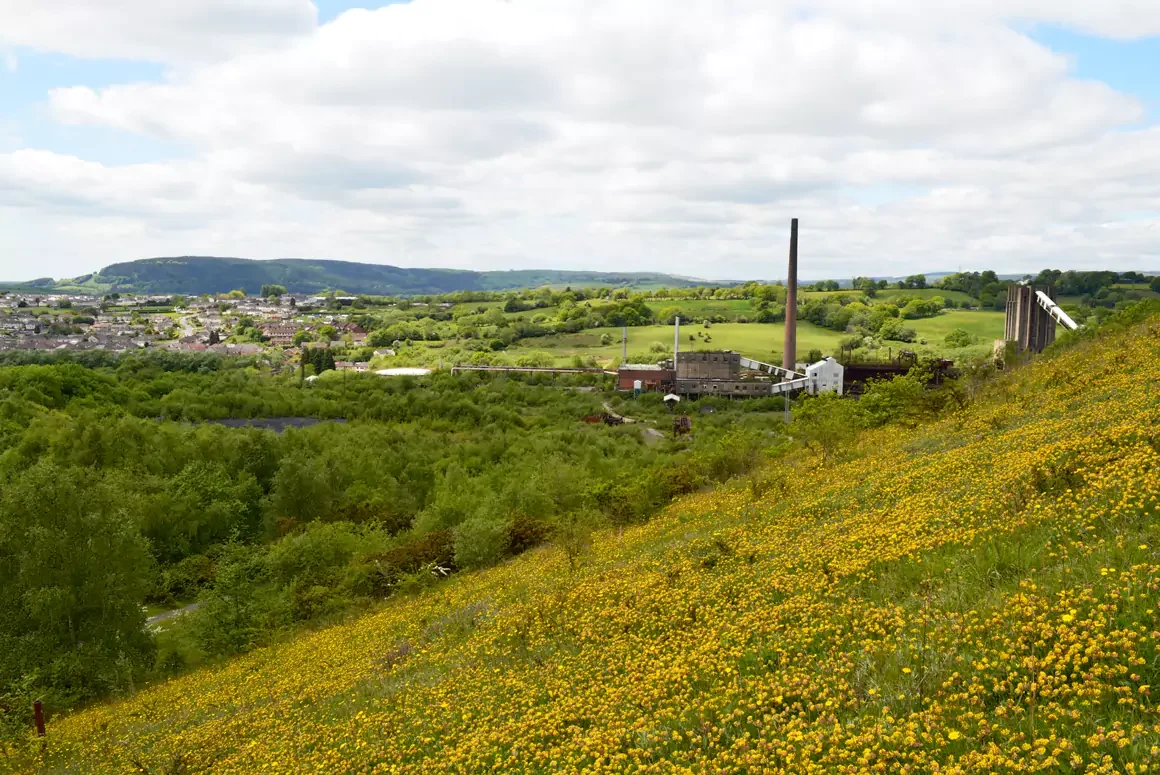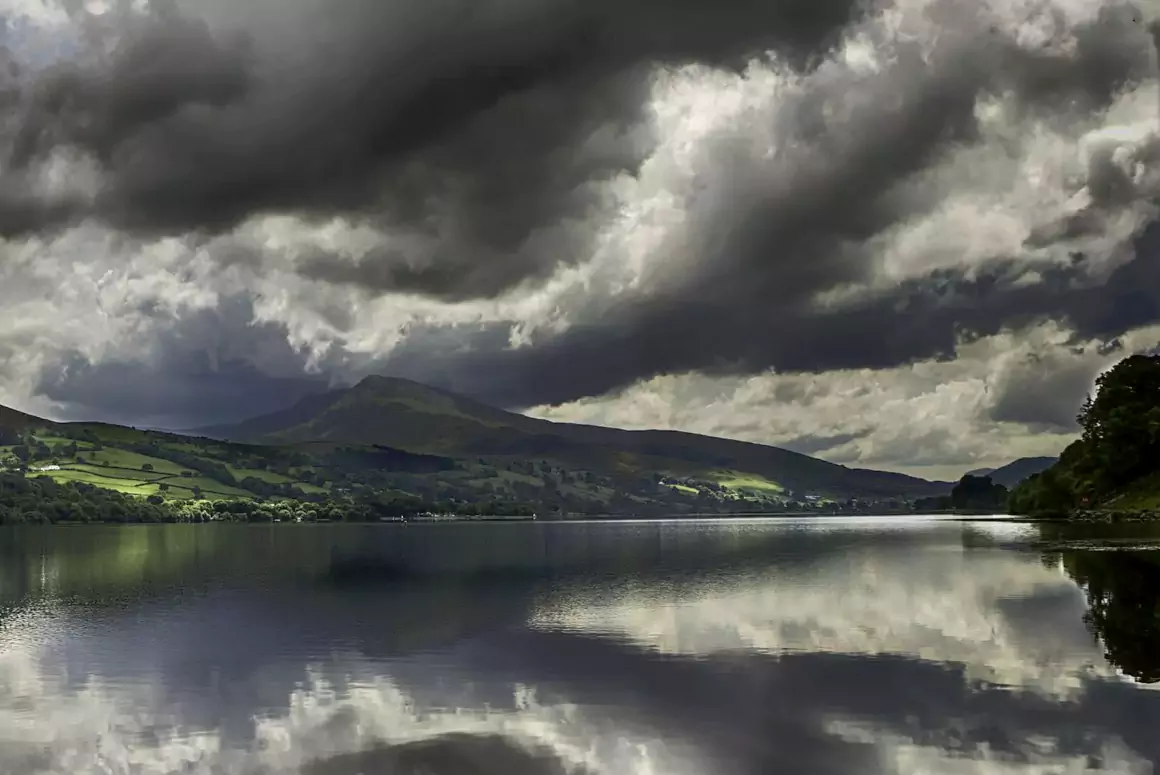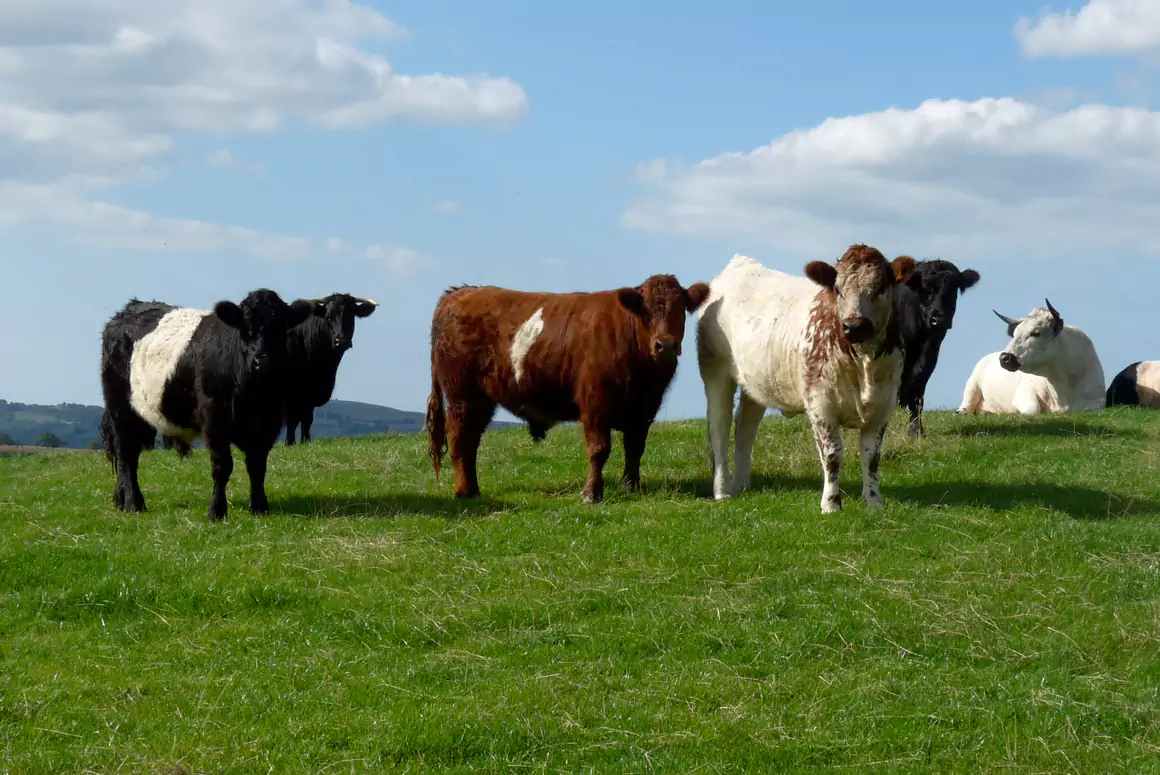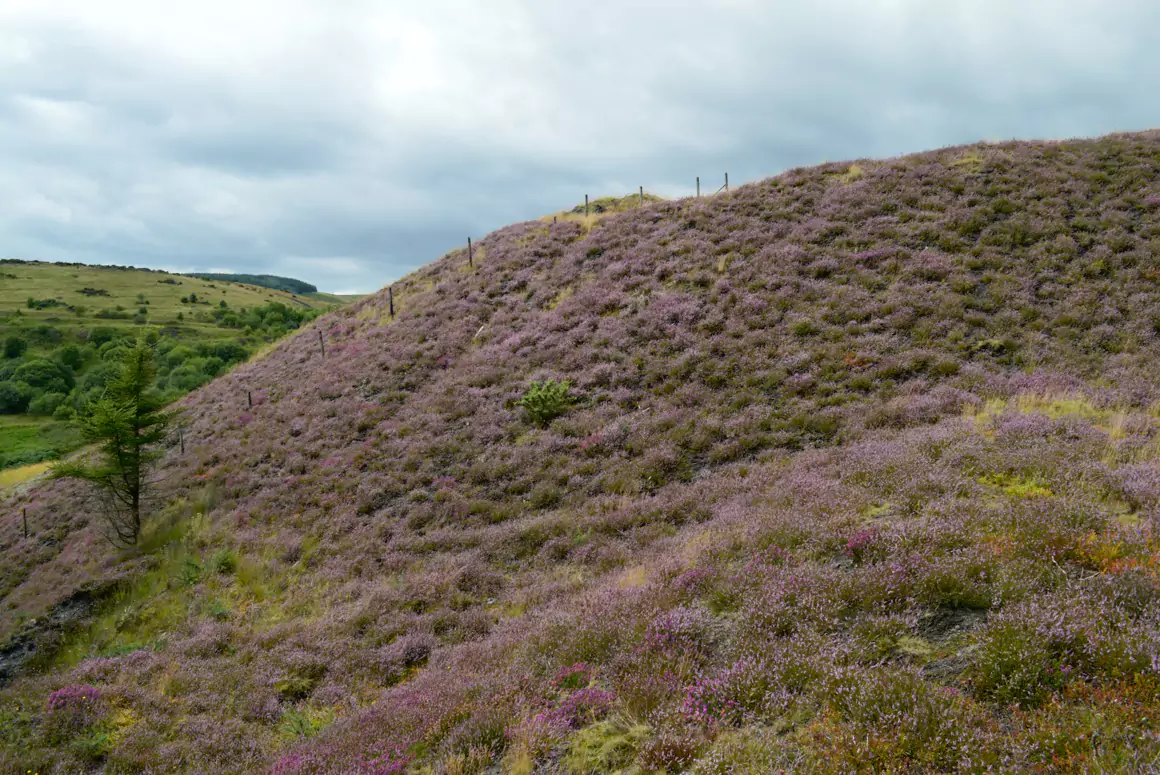Colliery spoil tips are an iconic feature in the landscape of the South Wales Valleys, yet they remain gravely overlooked, underappreciated and misunderstood. In the decades that have followed the widespread closure of deep coal mines in South Wales, nature has returned to the Valleys and transformed the landscape. Spoil tips, once black eye-sores in the landscape and devoid of life, have been transformed through the powers of Mother Nature into visually-spectacular wildlife havens. These spoil tips, once a symbol of a highly destructive industry, have ironically become an important component of the rich biodiversity of the South Wales Valleys. They have become a refuge for a range of rare and scarce animal and plant species, and many now support habitats and species of considerable local and national conservation significance.
Feature image (above): The wildflower-rich grasslands of Cwm Tips, Beddau, support a wealth of pollinating insects. This includes thriving colonies of Small Blue Cupido minimus and Dingy Skipper Erynnistages butterflies – species that have experienced widespread declines and are considered a conservation priority in the UK.
*First published in Welsh Country Magazine Jan-Feb 2019
Image problem
Regardless of how well nature has transformed the landscape, the perceptions of dereliction and despoliation stubbornly persist. What should be seen as an ecological asset is still often viewed as a problem in need of ‘fixing’. As a legacy of a previous age, there is often a desire to sweep away the signs of a sometimes painful past, and there remains pressure to do something ‘useful’ with these sites. This ‘doing something’ can include a range of proposals, from commercial opencast schemes looking to rework coal and untapped seams, to more recent suggestions to plant biofuels on ‘derelict’ colliery spoil. A negative public perception of spoil tips exists, and developing public support and interest in these sites is key in efforts to protect them and the species they support.
Raising the profile
This process has begun through the Colliery Spoil Biodiversity Initiative, which was founded for this exact purpose – to raise awareness of the importance of colliery spoil tips in South Wales, particularly (but not exclusively) for biodiversity. Social media and other outlets have been used to raise the profile of colliery spoil at the regional and national levels. At the time of writing, the Colliery Spoil Biodiversity Initiative has over 1,700 followers across several social media platforms and, despite its niche focus, people seemingly enjoy discovering how these sites have been transformed from their once barren state.
You may recall our feature in the *March/April 2017 issue of Welsh Country magazine where we introduced the topic of colliery spoil tips and the Colliery Spoil Biodiversity Initiative project. Almost two years on from our initial correspondence, we thought it was a timely opportunity to update you on the progress of the project and its future prospects, along with the future prospects of the habitats and species it seeks to protect.
Invertebrates
Although the Colliery Spoil Biodiversity Initiative seeks to raise awareness of all wildlife found on spoil tips, it places particular emphasis on invertebrates. Despite the important role of invertebrates in our ecosystem (as decomposers, pollinators and food for other animals – to name just a few), they are often overlooked in favour of larger, more charismatic animals such as birds or mammals. As a result, relatively little was known about the invertebrate fauna of colliery spoil tips prior to this project. This presented an excellent opportunity for the project to vastly improve our knowledge of these sites and the invertebrates they support.
The project began with some initial invertebrate surveys of five spoil tips in Rhondda Cynon Taf – in the heart of the South Wales Coalfield. A mix of old, revegetated tips and reclaimed tips (which were landscaped as part of land reclamation schemes in the 1970s/80s) were assessed as part of some short-term funding, revealing an astonishing array of invertebrate species from bees to bugs, beetles to millipedes. Most important was the discovery of numerous rare and scarce species – species of conservation priority at a national and UK level. Given the numerous spoil tips that exist across South Wales, these results hinted to an important role of colliery spoil habitats in invertebrate conservation.
The success of these surveys stimulated investment from Rhondda Cynon Taf County Borough Council, and later Neath Port Talbot County Borough Council, to explore these findings further. Three years later, 14 sites across two local authority areas have now been surveyed. These surveys have revealed spoil tips, often regarded as baron wastelands, to be home to approximately 1000 different invertebrate species – a total that is limited by the expertise of the surveyor, and is likely to be far greatly in reality. When such totals are combined with the species totals of vascular plants, mosses, lichens, fungi, birds, mammals, reptiles etc., an incredible community on these sites is revealed.
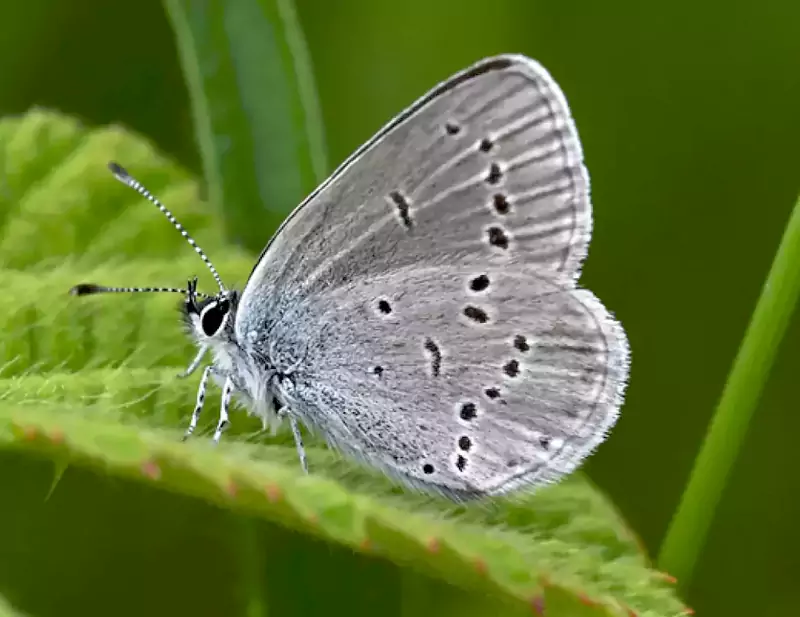
Small Blue Cupido minimus
The Small Blue butterfly Cupido minimus is the UK’s smallest resident butterfly species. It’s colonisation of spoil tips in the Valleys is a recent phenomenon which has taken the species far beyond its original coastal distribution in South Wales. It is heartening to see a nationally declining species utilise new habitats, and this demonstrates the potential for colliery spoil to provide new ecological opportunities.
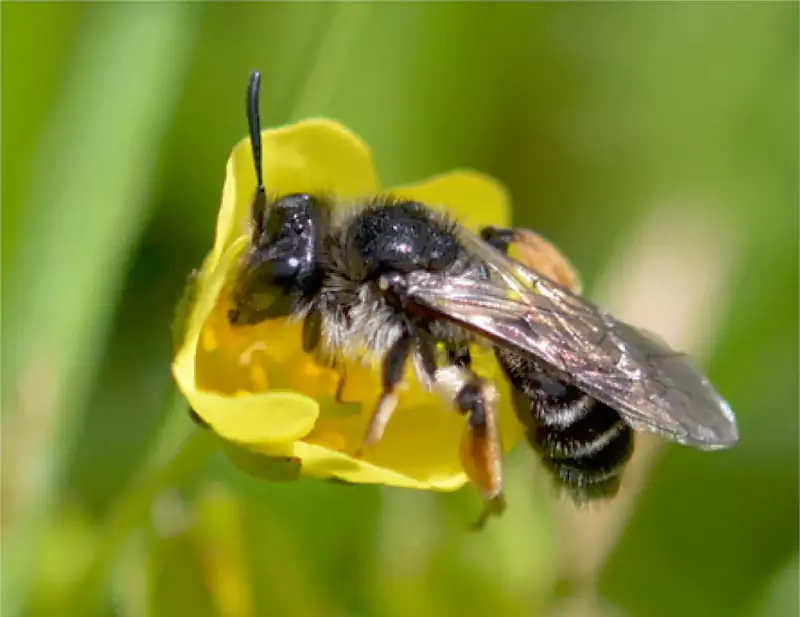
Tormentil Mining Bee Andrena tarsata
The Tormentil Mining Bee Andrena tarsata is one of 90 different bee species found on the spoil tips of South Wales. This Nationally Scarce bee is so-called because of its dependency on the yellow flowers of Tormentil Potentilla erecta, which is often abundant amongst Heathers and Bilberry Vaccinium myrtillus on colliery spoil heathland.
Importantly, this total includes some 100 or more species of conservation priority in the UK, species that we should be striving to protect. This includes species such as the Tormentil Mining Bee Andrena tarsata which has been lost from an estimated 50% of its known UK sites since 1970, and the rare and poorly known Thick-margined Mini-mining Bee Andrena falsifica with which it often occurs. Incredibly, even species ‘new to science’ are being discovered on these sites. In December 2016, a new species of millipede Turdulisoma cf helenreadae (nicknamed the ‘Maerdy Monster’) was discovered at Maerdy Colliery, in the Rhondda, by local millipede expert Christian Owen. And recently, another new species of millipede Turdulisoma cf turdulorum was discovered in South Wales, with colliery spoil tips currently accounting for two of its three known sites worldwide!
Such discoveries emphasise the importance of colliery spoil sites in South Wales and raise a vital question – why do we continue to destroy these habitats and oversee their continued decline? These are the questions that the Colliery Spoil Biodiversity Initiative seeks to ask and address.
Future
So, what does the future hold for these sites and the Colliery Spoil Biodiversity Initiative? To be honest, I don’t know. Over the past four years, the project has vastly improved our understanding of colliery spoil and gathered unequivocal evidence to support their conservation. But the project must now enter a new phase – using the evidence gathered to deliver change. It is now time to take action to safeguard the future of these sites and the species they support.
While excellent progress has been achieved in raising the profile of colliery spoil at the regional and national levels, changes in the attitudes and actions of ‘decision-makers’ in local and national government is still needed – after all, it is these people that often determine the future of these sites. It is important that colliery spoil is properly considered during land use and planning proposals, and adequate site protection endowed on the ‘best’ quality sites.
Unfortunately, funding is needed to continue the project and work towards delivering these goals. In these difficult financial times where investment in nature conservation continues to decline, it is unclear where this funding will come from. One thing is for sure however, the Colliery Spoil Biodiversity Initiative will continue to fight to protect these sites and the rare species they support to the best of its ability, even if this is in a voluntary capacity.
In a landscape where so many signs of the once-thriving coal industry have been lost, the old spoil tips and former colliery sites provide a tangible link to our past, and are part of the cultural identity of South Walians. Efforts to understand these sites, and alter public perception towards them, have only just begun, but it is hoped that one day soon colliery spoil sites will be appreciated as unique landscape features and areas of high biodiversity significance that deserve to be conserved.
Words & Pictures: Liam Olds, Entomologist and founder of Colliery Spoil Biodiversity Initiative.
If you would like to find out more about the project, or contribute to it in any way, please contact us at: collieryspoil@gmail.com, or follow us on our various social media platforms: @collieryspoil on Twitter, Facebook and Instagram.


